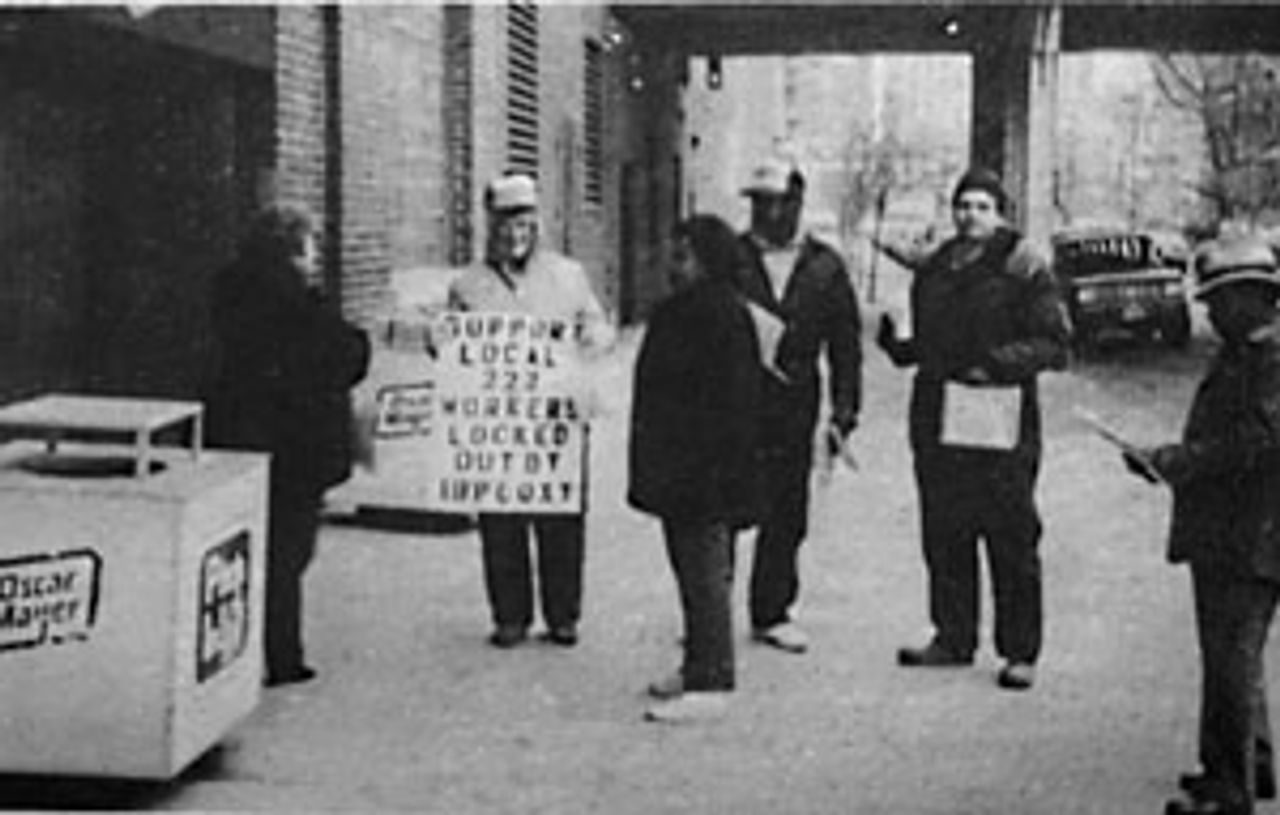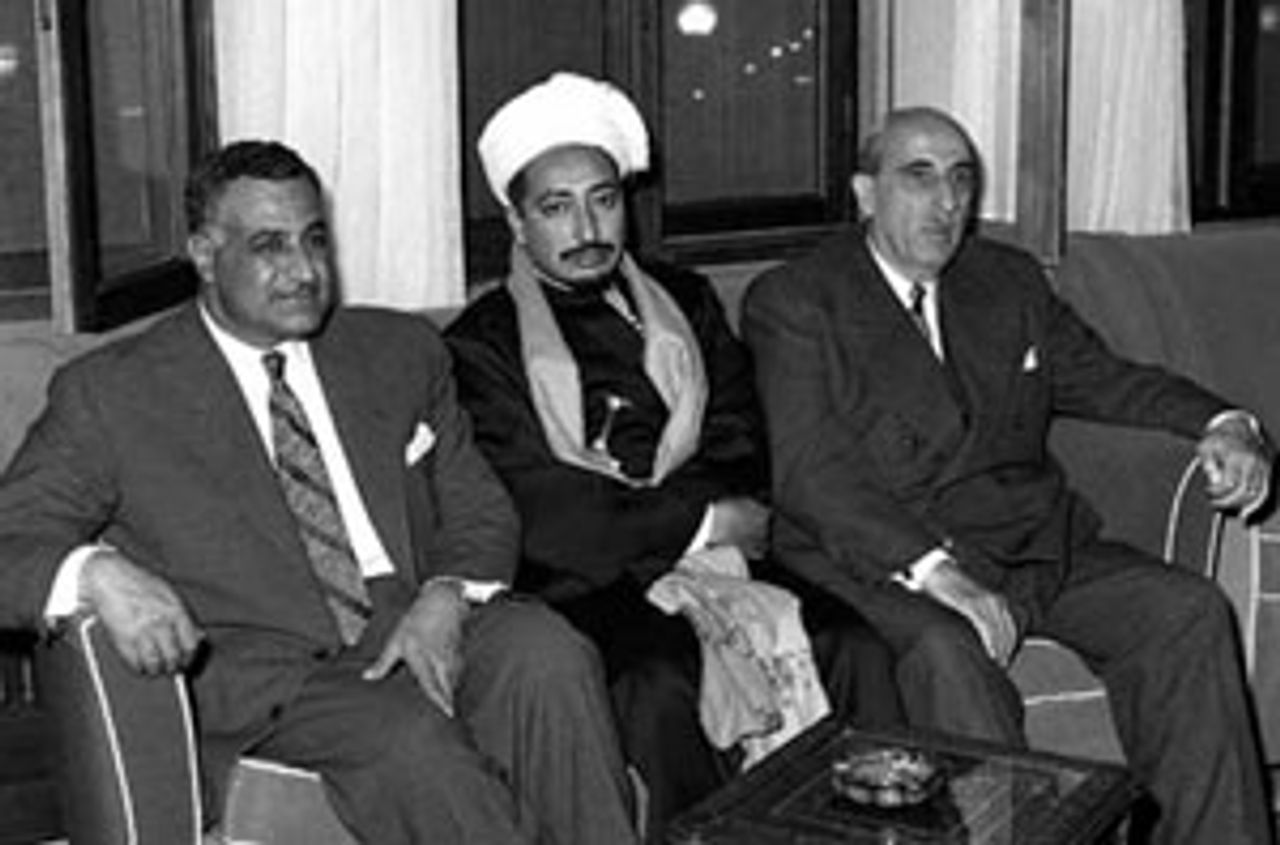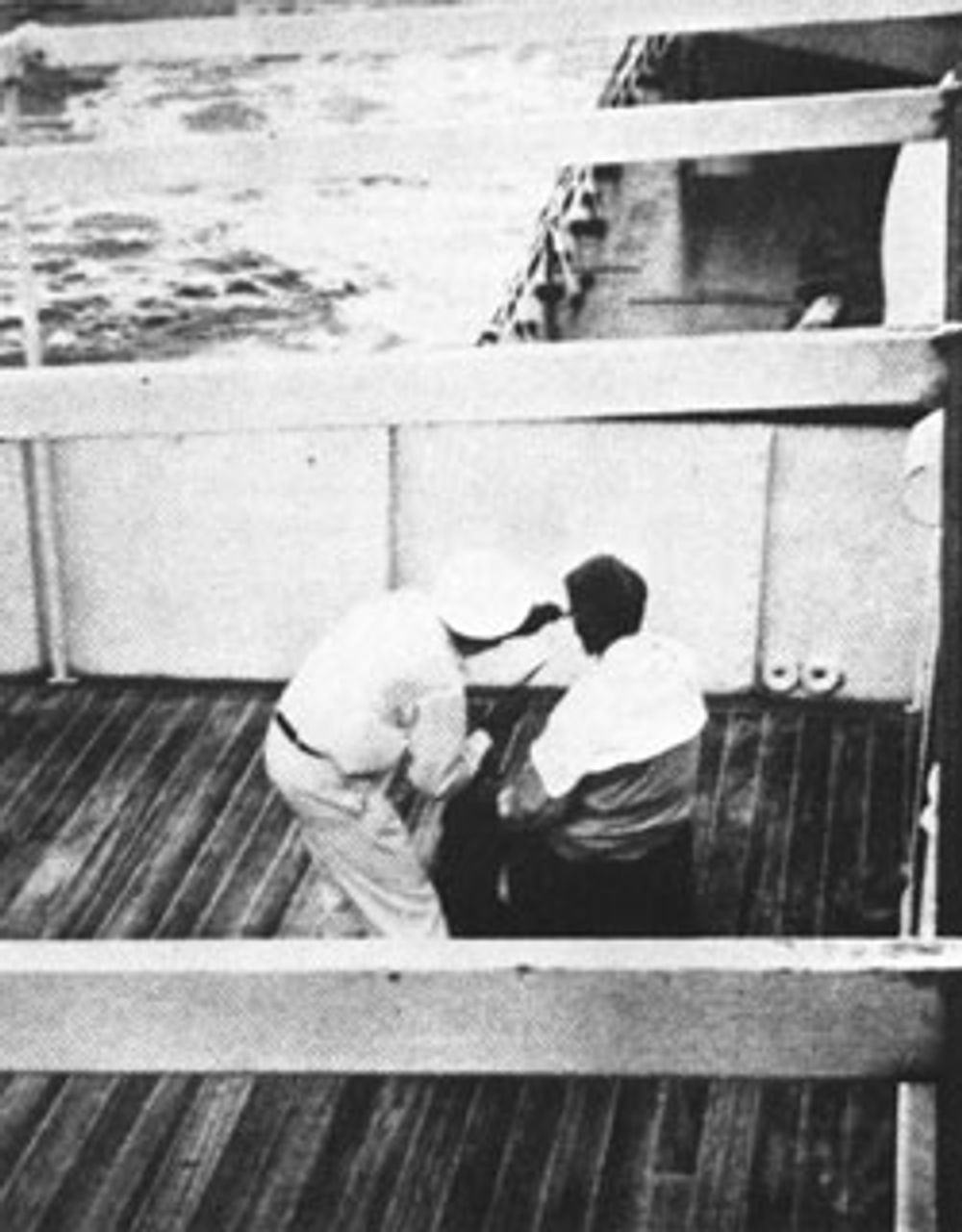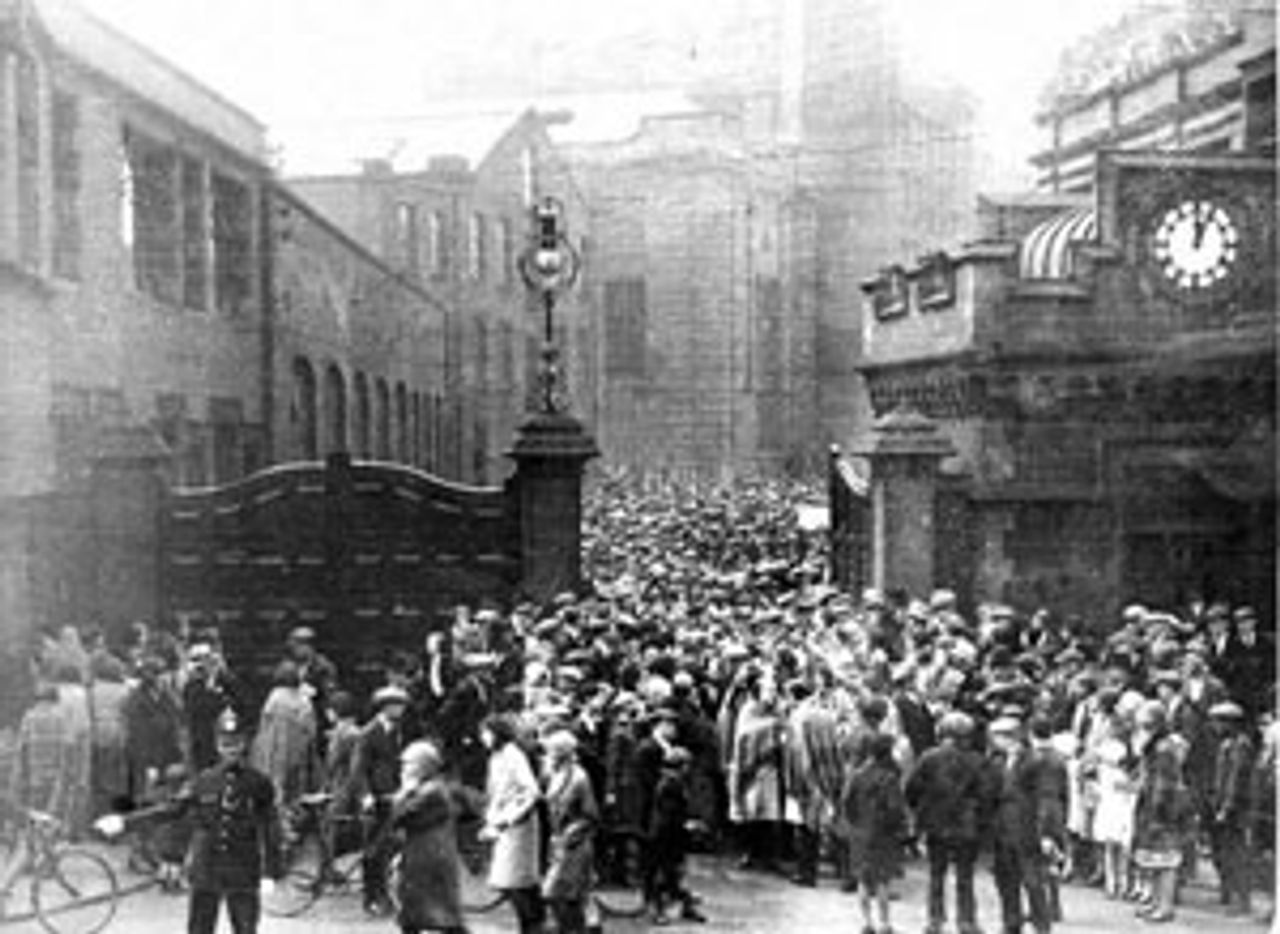This Week in History provides brief synopses of important historical events whose anniversaries fall this week.
25 Years Ago | 50 Years Ago | 75 Years Ago | 100 Years Ago
25 years ago: Labor struggles rage in the US
 Locked-out IBP workers campaign for support at the
Locked-out IBP workers campaign for support at theChicago Oscar Mayer plant
Iowa Beef Processors (IBP), a division of Occidental Petroleum, continued a lockout of 3,000 meatpackers initiated by management on December 13. The company locked out the workers after they overwhelmingly rejected a concessions contract.
The workers were members of United Food and Commercial Workers (UFCW) Local 222. The sprawling plant in Dakota City, Nebraska was the industry’s largest.
The meatpackers faced state troopers on the picket lines the following Monday. Children of workers carried signs saying, “IBP Locked Out Santa Claus,” and “Christmas is for Giving, IBP is for Taking.”
UFCW International President William Wynn launched a cynical boycott campaign, signaling that there would be no attempt to call out other unions in support of the meatpackers.
IBP was emboldened to take the offensive after the betrayal by the AFL-CIO of the yearlong 1985-86 Hormel strike. Since a bitter IBP strike four years earlier, the state of Nebraska had passed a law restricting the number of pickets to two every 50 feet.
Meanwhile, the Lockout of 43,000 steel workers at USX (now called US Steel) was in the fifth month of what would become the longest labor dispute in the history of the United Steel Workers union.
Other strikes and lockouts occurring in the US included Cudahy Meatpacking in Wisconsin (800 workers), Colt Firearms in Connecticut (1,200 workers), Seattle’s Lockheed Shipbuilding (900 workers), US Playing Card Company in Norwood, Ohio (350 workers), bus drivers and mechanics in Columbus, Ohio (530 workers), and PPG Corporation in West Virginia (650 workers).
50 years ago: Yemen and Egypt dissolve federation
 Nasser with Yemeni Crown Prince Mohammad Badr
Nasser with Yemeni Crown Prince Mohammad Badrand Shukri al-Quwatli (Syria) in 1958
On December 24, 1961, Egypt, then called the United Arab Republic (UAR), dissolved its federation with the Kingdom of Yemen, which had joined with the UAR in March 1958 in a still looser federation called the United Arab States (UAS). Egyptian President Abdel Gamal Nasser officially ended the association on December 26, 1961.
An Egyptian statement said the federation “contradicts the new UAR policy of no compromise with reactionaries in any Arab state.” The break followed a public rebuke of King Ahmed, the absolute religious and political ruler of Yemen, who had criticized Nasser’s nationalization program in a poem. Nasser and Ahmed had been co-presidents of the UAS.
There had been little real cooperation between Yemen, an extremely impoverished country of 4 million, and Egypt, and the former had maintained its own seat in the United Nations. Prior to their “union,” for more than a dozen years Cairo had been home of the Free Yemen organization, which sought to topple Ahmed and challenge for power in British-dominated South Yemen. Free Yemen had been sidelined during the UAS but had come back to life in recent months.
The break with Yemen, coming three months after Syria quit the UAR, was another debacle for Nasser and Pan-Arabism, which had utterly failed to alter the borders drawn up during the period of European colonial domination. Nasser and Egypt found themselves more isolated than ever. Egypt had no ties with Jordan or Syria and bitter relations with Saudi Arabia and Iraq.
75 years ago: Trotsky sets sail for Mexico
 Trotsky getting a haircut on the deck of the
Trotsky getting a haircut on the deck of thetanker Ruth
On December 19, 1936 the petrol tanker Ruth set sail from Hurum, Norway bound for Mexico. Onboard was the co-leader of the Russian revolution, Leon Trotsky, and his wife Natalia under the armed escort of the Norwegian commander of the Hurum police guard, Jonas Lie.
The Norwegian Social Democratic justice minister, Trygve Lie, who had initially granted the Trotskys the right to stay in Norway, only shortly thereafter to intern the couple, informed them of their imminent departure for North America only 24 hours in advance.
One week earlier, Lie visited Trotsky to tell him that, supposedly for financial reasons, his government intended to shift Leon and Natalia further north into the Norwegian wilderness. Such a move would have made an attack by Stalin’s forces all but inevitable.
Trotsky likened Lie to Henrik Ibsen’s villain, Burgomaster Stockman. In the play An Enemy of the People, the burgomaster kills his own brother, Dr. Stockman, to defend his authority and vested interests.
The Trotskys were not released from Norwegian internment prior to their departure, and their bank account was sequestered. Leon and Natalia packed their books and belongings in much haste amidst feelings of great isolation and uncertainty over what awaited them should they arrive in Mexico. They feared Stalin would get wind of the Norwegian government’s plans and sink the ship before it crossed the Atlantic.
Stormy seas rendered writing impossible for the first week of the journey, and without newspapers or radio the Trotskys busied themselves reading about Mexico, her people, her culture and politics. When the ship entered calmer waters one week after leaving Norway, Trotsky began to compile a journal. In his first entry he railed against the perfidious Norwegian authorities, but also wrote how the ship’s owner had kindly bestowed upon the couple his own comfortable cabin adjoining the captain’s quarters, much to the annoyance of police commander Lie, who had wished to keep the couple in more Spartan conditions.
100 years ago: Employers lock out Lancashire weavers
 The Lancashire cotton strike
The Lancashire cotton strikeOn December 22, 1911, the Lancashire Cotton Spinners and Manufacturers Association responded to strikes at two cotton mills by deciding on an industry-wide lockout to start on December 27. The lockout, which lasted four weeks, was the first industry-wide confrontation in the weaving industry for over 30 years and involved 160,000 weavers.
The workers were members of the Weavers Amalgamation, which had resolved to fight for a closed shop—that is, workplaces hiring union members only. The union held a series of rallies and launched a membership drive. The union executive voted to finance strikes at mills with 85 percent membership to achieve the closed shop.
At the end of November, the employers’ association agreed only to consider the case of each non-unionist separately. The industry-wide retaliation by cotton employers was part of what the Board of Trade described as “a quite remarkable surge of employer collectivism in Britain” from 1890 to 1914.
As the lockout proceeded, the union asked for a five percent wage increase, which the employers rejected. The union officials were soon prepared to end the closed shop campaign, but for the rank-and-file members it was a popular fight and Blackburn weavers insisted “no surrender” as late as January 17.
The union executive accepted a negotiated settlement imposing a six-month cooling off period and a hollow promise that the negotiator, G. R. Askwith, would consider the merits of both the closed and the open shop. Rank-and-file weavers in Northeastern Lancashire booed and hissed union officials, saying they had been sold out.
The mills reopened on January 22, but unrest among weavers continued unabated through 1912 and 1913, resulting in considerable success for militant wildcat strikes. Membership of the union continued to grow from 137,196 in 1911, to 179,391 in 1912 and 197,957 in 1913.
